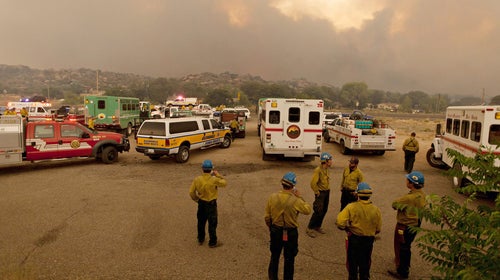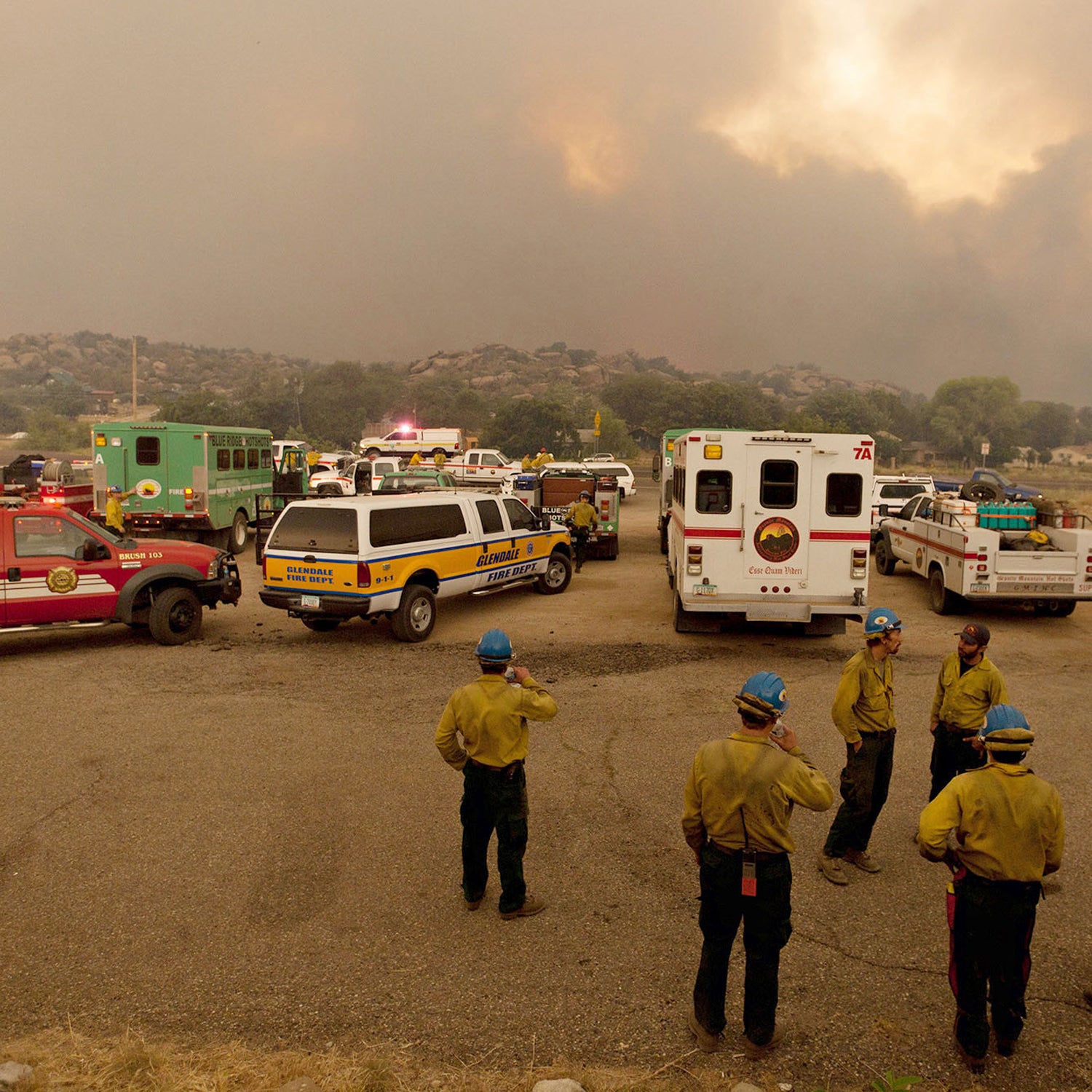It’s been a year since 19 firefighters burned to death while battling a blaze outside of Yarnell, Arizona. It was the worst tragedy in wildland firefighting since 1933, as Kyle Dickman wrote in �����ԹϺ���’s September 2013 cover story. As with other devastating burnovers—like Montana’s 1949 Mann Gulch Fire that left 13 dead; the 1953 Rattlesnake Fire, in California that killed 13; and Colorado’s 1994 South Canyon Fire that killed 14—the families of the 19 Granite Mountain Hotshots that died at Yarnell are calling for further investigation, for compensation, and for change. But if history is any indicator, they’re unlikely to get much satisfaction.
Last September, the state of Arizona released a 116-page, and offered seven recommendations. The mistake was not following a basic rule of firefighting: “Keep one foot in the black.” That means staying in the safety of an already-burned area. In Yarnell, Granite Mountain’s superintendent, Eric Marsh, sent his men out of the black and bushwhacking through a thicket of chaparral toward some ranch buildings that appeared closer than they were. The report also recommended a list of seven remedies to help prevent future tragedies—basic stuff like upgrading communications technology for firefighters and compelling communities to do a better job of clearing brush around buildings to create defensible space.
As is the case with many incident reports, the one on Yarnell failed to determine whether anybody should be held responsible for the disaster. So the courts will have to step in, instead. Since September, the town of Yarnell has been awash in new lawsuits. some 180 local residents and business owners have sued Arizona’s state forestry department alleging negligence. In December, the families of 12 of the 19 dead began filing wrongful death claims, asking a judge for damages that would total more than $200 million. Last week, they filed another complaint seeking compensation for, “loss of love, affection, companionship, care, protection and guidance.” As with the fire itself, the pattern of blame and questioning, here, has played out before.
Within two years of the 1949 Mann Gulch Fire, the families of four of the dead filed eight lawsuits similar to those filed in Arizona last week alleging, “loss of comfort, society, and companionship.” During that incident, recounted by Norman Maclean in Young Men and Fire, the U.S Forest Service’s board of review found “no evidence of disregard” by the supervisors on the ground. Ultimately, each of those families were paid a $400 burial allowance under the Federal Employees Compensation Act. Nobody was awarded damages.
For the families of the Yarnell victims, answers and accountability are no doubt important coping mechanisms, too. One grieving Yarnell father, David Turbyfill, has though no fabric pup tent could have saved the Granite Mountain crew from such an intense and close-quarters burnover.
“It’s about making sure that another 19 families don’t have to live the horror we’ve had to live with in the past year, and for the rest of our lives,” Joe Woyjeck, a Los Angeles County firefighter who lost a son in Yarnell, told the Arizona Republic newspaper. “The number-one thing is there needs to be changes, and nothing has changed since last year.”
The most likely outcome from Yarnell is a series of palliative policy shifts that do little to address the nation’s firefighting industrial complex. The number of structures burned every year is nearly 3,000, up from 932 just a decade ago, and the total cost of suppression is at an all time high of $4.7 billion a year. Since Yarnell, 15 more wildland firefighters have died on the job, in accidents ranging from an to getting that fell. It’s a bad deal all around.
What’s needed isn’t better technology or communication, but the final recognition that we’re no better at dousing forest fires than we are at stopping tornadoes or hurricanes. We shouldn’t be fighting them in the first place. As with other natural disasters, we should urge individual and community preparedness, organize evacuations, and provide relief in the aftermath. The only problem with fire is the persistent, juvenile belief that we can fight it in hand-to-hand combat and win. We can’t. There may have been a time, before long-term drought and years of fuel buildup when total suppression was possible. But its a foolhardy strategy, now.
Writers from Aldo Leopold to Philip Connors have been telling us this for years. It’s good advice. But implementing a preparation and aftermath-only policy would be political suicide for elected officials: doing something, even if its wasteful and gets people killed, is still apparently better than sitting idle while stuff burns. Sending in logging crews to thin overgrown forests is even less popular, since it could be used as a pretext to re-log pretty much every forest everywhere.
In Canada, the recognition of fire’s inevitability is gaining ground. Rather than trying to develop better fire shelters for their men, . Lucy Tower, manager of B.C.’s fire equipment depot, recently told the CBC that Canadian firefighters are “never put in a situation where they would need to deploy a fire shelter.” among wildland firefighters, which has been more or less unchanged since doing away with the shelters. More importantly, they take a more conservative approach to intervention.
We should follow suit and then some. We should gradually transition America’s seasonal wildland firefighters into salaried fuels reduction crews. The work is just as backbreaking but nowhere near as glamorous. It’s also safer and more effective. According to a report by Headwater Economics, only 2 percent of 70,000 at-risk Western communities are firewise, enacting ordinances, building codes, and requiring defensive space to rob a fire of momentum.
Ironically, one of the most progressive, firewise communities anywhere in the U.S. was Prescott, Arizona, which had employed the Granite Mountain Hotshots since 2002. Only then, they weren’t hotshots. They were a fuels crew and spent most of their time clearing brush away from buildings and creating defensible space.
Yarnell, an hour to the southwest of Prescott, wasn’t as prepared. The fire that tore through it a year ago wasn’t going to stop for men and tools and tankers. It may not be a comfort to the families, but they didn’t die because of bad forecasting or because they didn’t keep a foot in the black. They died because we can’t live with fire.


